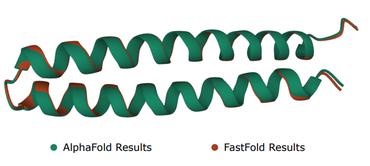Search Results for author: Tommaso Biancalani
Found 14 papers, 7 papers with code
Feedback Efficient Online Fine-Tuning of Diffusion Models
no code implementations • 26 Feb 2024 • Masatoshi Uehara, Yulai Zhao, Kevin Black, Ehsan Hajiramezanali, Gabriele Scalia, Nathaniel Lee Diamant, Alex M Tseng, Sergey Levine, Tommaso Biancalani
It is natural to frame this as a reinforcement learning (RL) problem, in which the objective is to fine-tune a diffusion model to maximize a reward function that corresponds to some property.
Fine-Tuning of Continuous-Time Diffusion Models as Entropy-Regularized Control
no code implementations • 23 Feb 2024 • Masatoshi Uehara, Yulai Zhao, Kevin Black, Ehsan Hajiramezanali, Gabriele Scalia, Nathaniel Lee Diamant, Alex M Tseng, Tommaso Biancalani, Sergey Levine
Diffusion models excel at capturing complex data distributions, such as those of natural images and proteins.
Unsupervised Segmentation of Colonoscopy Images
no code implementations • 19 Dec 2023 • Heming Yao, Jérôme Lüscher, Benjamin Gutierrez Becker, Josep Arús-Pous, Tommaso Biancalani, Amelie Bigorgne, David Richmond
Colonoscopy plays a crucial role in the diagnosis and prognosis of various gastrointestinal diseases.
Conformalized Deep Splines for Optimal and Efficient Prediction Sets
1 code implementation • 1 Nov 2023 • Nathaniel Diamant, Ehsan Hajiramezanali, Tommaso Biancalani, Gabriele Scalia
SPICE is compatible with two different efficient-to-compute conformal scores, one oracle-optimal for marginal coverage (SPICE-ND) and the other asymptotically optimal for conditional coverage (SPICE-HPD).
Complex Preferences for Different Convergent Priors in Discrete Graph Diffusion
no code implementations • 5 Jun 2023 • Alex M. Tseng, Nathaniel Diamant, Tommaso Biancalani, Gabriele Scalia
Diffusion models have achieved state-of-the-art performance in generating many different kinds of data, including images, text, and videos.
RINGER: Rapid Conformer Generation for Macrocycles with Sequence-Conditioned Internal Coordinate Diffusion
1 code implementation • 30 May 2023 • Colin A. Grambow, Hayley Weir, Nathaniel L. Diamant, Alex M. Tseng, Tommaso Biancalani, Gabriele Scalia, Kangway V. Chuang
Macrocyclic peptides are an emerging therapeutic modality, yet computational approaches for accurately sampling their diverse 3D ensembles remain challenging due to their conformational diversity and geometric constraints.
CREMP: Conformer-Rotamer Ensembles of Macrocyclic Peptides for Machine Learning
no code implementations • 14 May 2023 • Colin A. Grambow, Hayley Weir, Christian N. Cunningham, Tommaso Biancalani, Kangway V. Chuang
Computational and machine learning approaches to model the conformational landscape of macrocyclic peptides have the potential to enable rational design and optimization.
Towards Understanding and Improving GFlowNet Training
1 code implementation • 11 May 2023 • Max W. Shen, Emmanuel Bengio, Ehsan Hajiramezanali, Andreas Loukas, Kyunghyun Cho, Tommaso Biancalani
We investigate how to learn better flows, and propose (i) prioritized replay training of high-reward $x$, (ii) relative edge flow policy parametrization, and (iii) a novel guided trajectory balance objective, and show how it can solve a substructure credit assignment problem.
GraphGUIDE: interpretable and controllable conditional graph generation with discrete Bernoulli diffusion
1 code implementation • 7 Feb 2023 • Alex M. Tseng, Nathaniel Diamant, Tommaso Biancalani, Gabriele Scalia
Our framework for graph diffusion can have a large impact on the interpretable conditional generation of graphs, including the generation of drug-like molecules with desired properties in a way which is informed by experimental evidence.
Improving Graph Generation by Restricting Graph Bandwidth
1 code implementation • 25 Jan 2023 • Nathaniel Diamant, Alex M. Tseng, Kangway V. Chuang, Tommaso Biancalani, Gabriele Scalia
However, one of the main limitations of existing methods is their large output space, which limits generation scalability and hinders accurate modeling of the underlying distribution.
NODAGS-Flow: Nonlinear Cyclic Causal Structure Learning
1 code implementation • 4 Jan 2023 • Muralikrishnna G. Sethuraman, Romain Lopez, Rahul Mohan, Faramarz Fekri, Tommaso Biancalani, Jan-Christian Hütter
Learning causal relationships between variables is a well-studied problem in statistics, with many important applications in science.
Hierarchically branched diffusion models leverage dataset structure for class-conditional generation
1 code implementation • 21 Dec 2022 • Alex M. Tseng, Max Shen, Tommaso Biancalani, Gabriele Scalia
We highlight several advantages of branched diffusion models over the current state-of-the-art methods for class-conditional diffusion, including extension to novel classes in a continual-learning setting, a more sophisticated form of analogy-based conditional generation (i. e. transmutation), and a novel interpretability into the generation process.
A 3D-Shape Similarity-based Contrastive Approach to Molecular Representation Learning
no code implementations • 3 Nov 2022 • Austin Atsango, Nathaniel L. Diamant, Ziqing Lu, Tommaso Biancalani, Gabriele Scalia, Kangway V. Chuang
Molecular shape and geometry dictate key biophysical recognition processes, yet many graph neural networks disregard 3D information for molecular property prediction.
Conditional Diffusion with Less Explicit Guidance via Model Predictive Control
no code implementations • 21 Oct 2022 • Max W. Shen, Ehsan Hajiramezanali, Gabriele Scalia, Alex Tseng, Nathaniel Diamant, Tommaso Biancalani, Andreas Loukas
How much explicit guidance is necessary for conditional diffusion?




